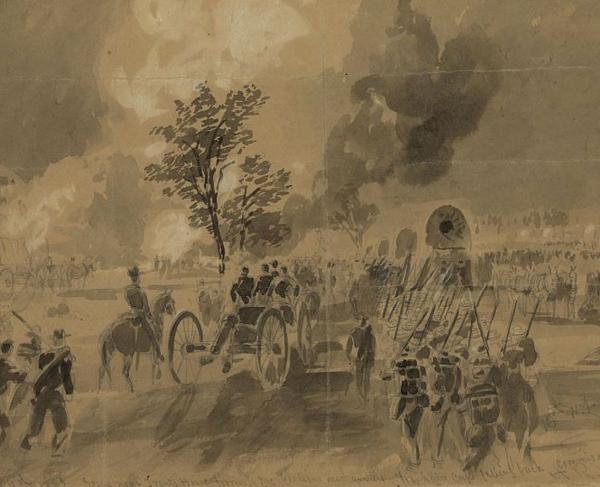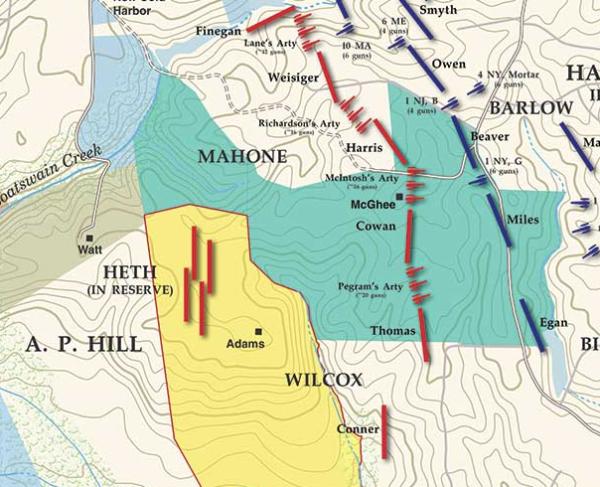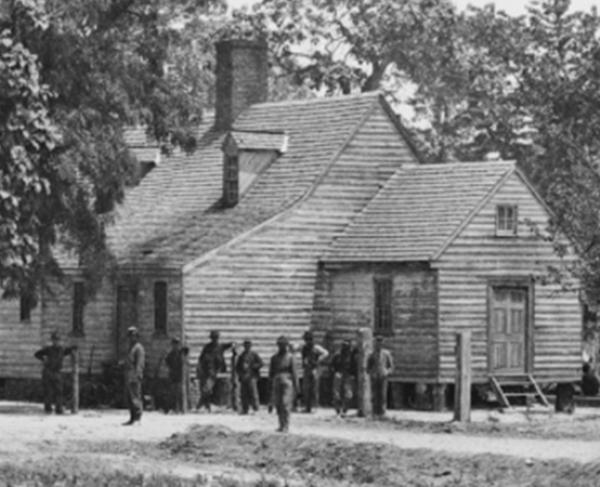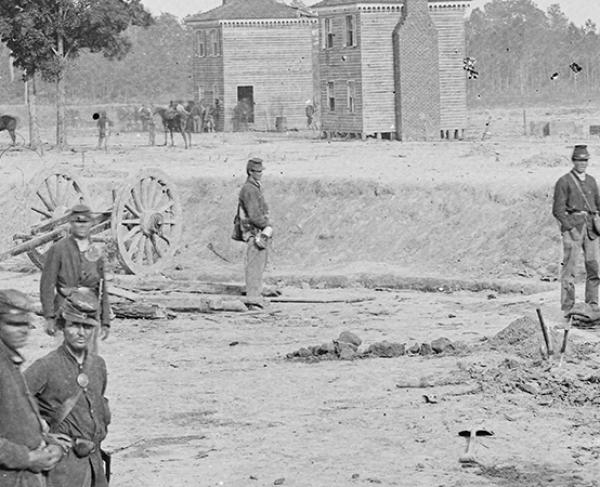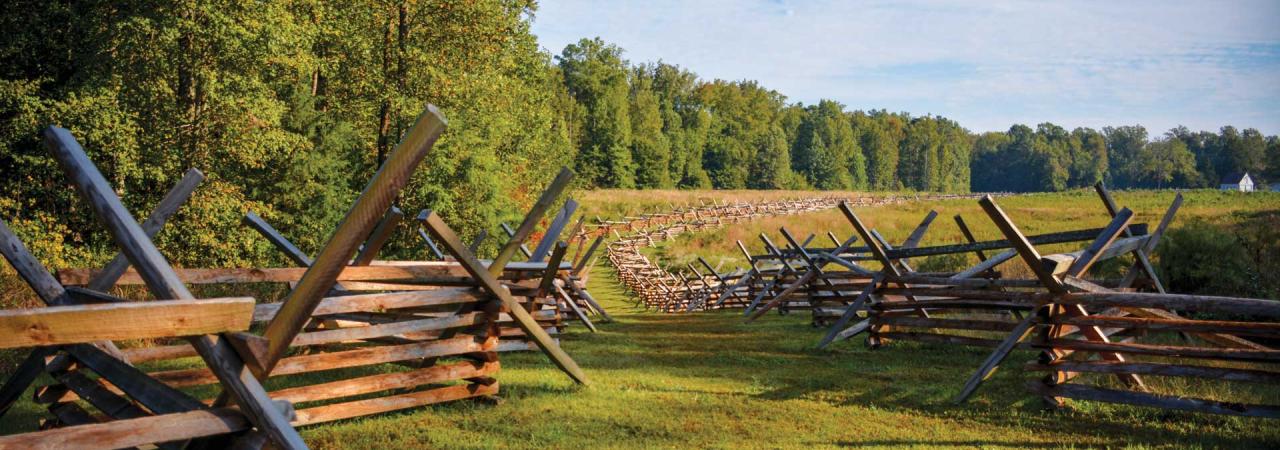
Gaines' Mill Battlefield, Mechanicsville, Va.
Help Save 344 Sacred Acres at Gaines’ Mill-Cold Harbor & Seven Pines
Urgent Update
Back in September, the Trust announced the fourth and LARGEST tract in our historic Gaines’ Mill-Cold Harbor campaign.
As of today, the Trust is short of this goal by just over $100,000.
Preserving this tract today truly prevents the alarming new types of development which are running rampant in Virginia right now... utility-scale solar farms, huge (and noisy) five- to eight-story data centers, 24-hour warehouse distribution centers that span dozens or scores of acres, and new housing developments.
It is vital we preserve land of such significance and honor. As historian Robert K. Krick once wrote, “Few battles of comparable size have attracted less attention across the decades.”
Here’s how you can help
If you have not yet given to the Gaines’ Mill-Cold Harbor Saved Forever Campaign, do it today by helping secure “The Cavalry Charge” tract and the first-ever tract at Seven Pines once and for all. You’ll be among the supporters of this once-in-a-lifetime campaign!
And if you have given, but you have it in your heart and budget to give one more time, know that your commitment to hallowed ground will forever be remembered.
The Background
There is only one place in America where nearly one square mile of a “double battlefield” can still be preserved. And perhaps even more remarkable, there is only one place where nearly one square mile of hallowed ground is essentially as pristine as it was when those two battles raged in 1862 and 1864.
The overlapping ground on which both the battles of Gaines’ Mill and Cold Harbor were fought is one of the most hallowed battlefields in America.
Over the past three years, we’ve steadily reached and surpassed major milestones with this project, and now we are closer than ever to permanently preserving a nearly one-square-mile piece of sacred battlefield! We've already made excellent progress in saving the land at “Pickett’s Charge Five Times as Large” in Phase 1, “The Intersection” in Phase 2, and “The Juncture at Griffin’s Woods” in Phase 3.
Saved Forever Campaign – Phase 4
Gaines’ Mill and Cold Harbor “The Cavalry Charge”
March alongside us as we pursue the next, absolutely crucial phase of this landmark campaign at Gaines’ Mill and Cold Harbor.
This is a once-in-a-lifetime opportunity to permanently preserve the more than 332 acres at Gaines’ Mill and Cold Harbor. The tract is impressive in both size and historical significance. Plus, we have the opportunity to save the first 12 acres ever at Seven Pines!
We are calling the largest tract of land in the campaign the “The Cavalry Charge” tract, in honor of the late-day (and unusual) charge by Union cavalry against Confederate infantry.
This enormous tract on both the Gaines’ Mill and Cold Harbor battlefields extends from the strategically important Chickahominy River northward to connect with the Richmond National Battlefield Park, as well as the previous tracts we have worked together to save. Securing this tract would create a 3.5-mile linear swath of protected ground.
The total transaction value for the combined 344 acres we can save at Gaines’ Mill and Seven Pines is $1.085 million — certainly a very significant sum. Fortunately, we’ve already received a few significant gifts from some very generous major donors and expect to receive state and federal grants. But even with those generous gifts and grants, we will still have to raise $506,047.
We can’t let this opportunity slip through our hands.
The History
Battle of Gaines’ Mill
On June 27, 1862, newly installed General Robert E. Lee sought to strike a blow on an isolated wing of Union General George B. McClellan’s army. The resulting Confederate charge at Gaines’ Mill was the largest of the entire Civil War.
Toward the north end of the tract is the site of the wartime Adams House. Like his brother Francis, who owned a farm near the Seven Pines battleground just a few miles away, Joseph Adams literally had the Civil War explode upon his doorstep. In fact, because of its slightly elevated perch, the Adams House was one of the key defense points in the Union line on June 27.
After the Confederates finally broke the Union defensive line along Boatswain’s Creek, fighting not only against the Federals but also against the setting sun, forces from Union General Fitz John Porter’s Fifth Corps made a final, desperate stand that devolved into hand-to-hand fighting. The Federal troops were within a whisker of being swept from the field completely but for the 5th U.S. Cavalry’s unusual charge against Confederate infantrymen that bought them just enough time and space to get away.
Still, Gaines’ Mill was Robert E. Lee’s first major victory of the war, and both sides amassed approximately 15,000 casualties in just six hours of fighting, making it — at that time — the second- bloodiest battle of the War, behind Shiloh.
Battle of Cold Harbor
For the residents of Hanover County, Virginia, June 1864 must have felt like déjà vu all over again. On much of the exact same ground that witnessed the Battle of Gaines’ Mill, even larger Union and Confederate forces would clash again, this time at the Battle of Cold Harbor.
As General Ulysses S. Grant moved the Army of the Potomac southward towards Richmond, his forces met with Lee’s just ten miles north of the Confederate Capital at the Cold Harbor Crossroads. Here, Grant launched repeated attacks against the entrenched Confederate position, which Lee’s army continually repulsed in a brutal two-week engagement that resulted in more than 17,000 casualties.
Grant famously wrote of the carnage, “I have always regretted that the last assault at Cold Harbor was ever made... No advantage whatever was gained to compensate for the heavy loss we sustained.” Though Lee had triumphed, the battle would prove his last large-scale victory of the war as Grant turned his attention towards Petersburg.
Battle of Seven Pines
For the first time EVER, we have a chance to preserve land at the Battle of Seven Pines, also known as Fair Oaks.
In May of 1862, General McClellan was very close to taking the capital of the Confederacy. Commanding the Union’s largest army to date, he had amassed a force of 105,000 and was a mere eight miles outside of Richmond. Union soldiers said they could hear the beleaguered city’s church bells.
On May 31, Confederate forces lashed out at McClellan’s army in what we now know as the Battle of Seven Pines. A total of approximately 73,000 forces engaged for the next two days, with each side suffering extensive casualties: 5,739 for the North, and 7,997 for the South.
By the time the smoke had cleared, each side claimed victory, though neither side had really achieved it. But arguably more consequential than a tactical or strategic win for either side was an event that would change the course of the entire war.
During the battle, General Joseph E. Johnston was wounded, and Confederate president Jefferson Davis would tap his senior military advisor Robert E. Lee to become the new commander of the Army of Northern Virginia. Lee wasted no time in making his mark, and within a month had driven McClellan back down the Virginia peninsula, saving the capital of the Confederacy.
With the promotion of Lee, the Battle of Seven Pines turned out to be a major pivot point in the war.
But Seven Pines also serves as a cautionary tale about what can happen when we fail to preserve a battlefield. Despite the battle’s significance in the trajectory of the war, the battlefield was all but lost to commercial and residential development many years ago. Only a handful of historical markers trace the progression of the battle along modern U.S. Route 60 and Virginia Route 33.
Back in the 1920s, a small airfield was built on the site of the battlefield, perhaps when many of the “old soldiers” had faded away, and a new generation was looking to “move on.” In the ‘60s and ‘70s, however, that “small airfield” expanded to become today’s Richmond International Airport, driving more development all around it, and so much of the Seven Pines / Fair Oaks battlefield is now, sadly, gone forever.
That’s why the small 12-acre tract we have the chance to save there now is so important. These 12 acres at Seven Pines not only give us the chance, for the first time, to tell the story of the battle that happened there.
Continue the charge to protect hallowed ground at Gaines’ Mill and Cold Harbor
With this history in mind, these are among the most important battlefield acres to preserve.
We have this once-in-a-lifetime opportunity to permanently save more than 332 acres at Gaines’ Mill and Cold Harbor – a significant tract impressive in both size and historical significance. Plus, we have the opportunity to save the first 12 acres ever at Seven Pines!
The fact is that we still must raise a significant amount of money before this land can be considered truly preserved. Please make a generous gift to help us preserve this significant land.

